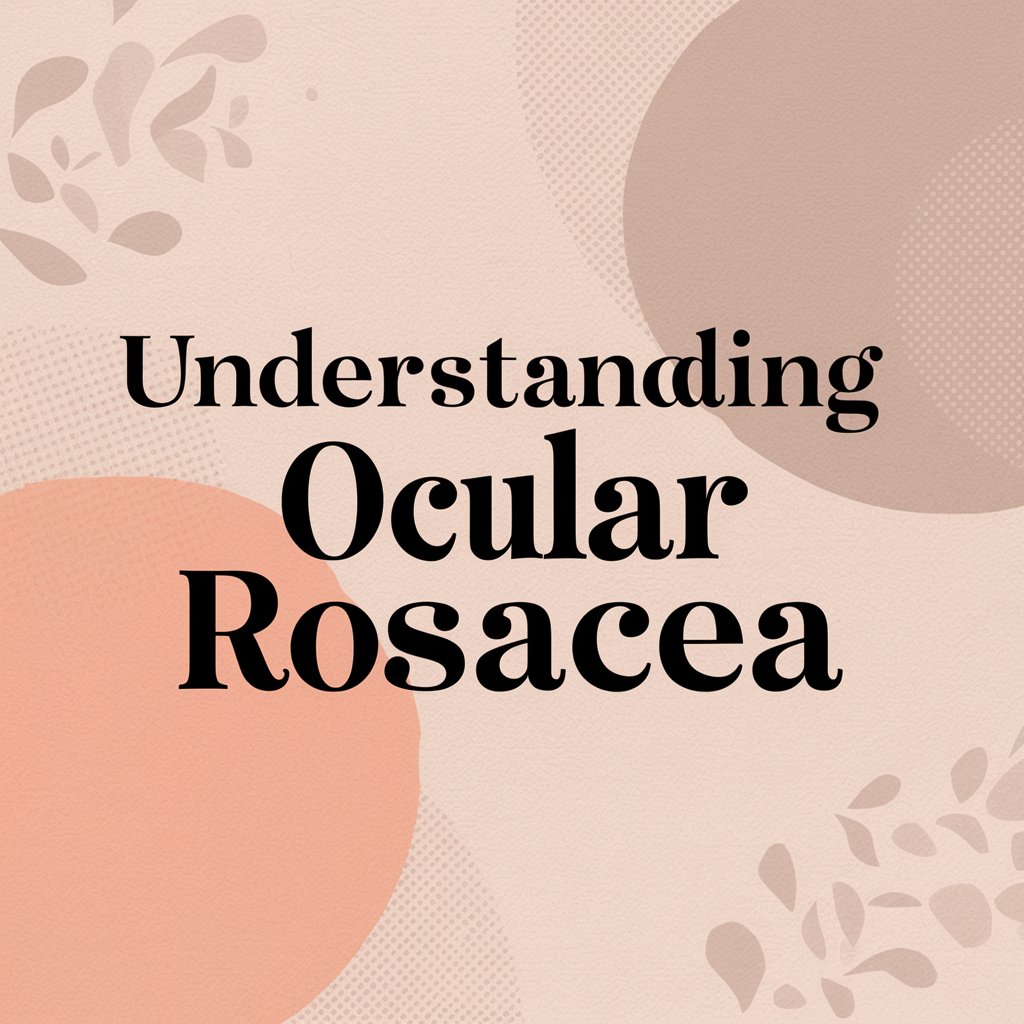Ocular rosacea is a chronic condition that affects the eyes, often causing discomfort and potential complications if left untreated. While it primarily impacts the eyes, it is closely associated with rosacea, a skin condition that affects the face.
In this blog post, we will delve into what is ocular rosacea, its symptoms, causes, and the available treatment options, providing a comprehensive overview for those seeking to understand and manage this condition.
What is Ocular Rosacea?
Ocular rosacea is a subtype of rosacea that affects the eyes. It typically appears in conjunction with facial rosacea but can also manifest independently. The condition leads to inflammation of the eyes and eyelids, often causing redness, dryness, and a gritty sensation.
This inflammation can affect various parts of the eye, including the eyelids, the conjunctiva (the membrane covering the white part of the eye), and even the cornea (the clear front part of the eye).
Symptoms of Ocular Rosacea
The symptoms of ocular rosacea can vary in severity and may include:
Redness: The whites of the eyes and the eyelids may appear red and inflamed, resembling conjunctivitis (pink eye).
Dryness: A persistent feeling of dryness in the eyes, leading to discomfort and frequent blinking.
Irritation: A sensation of burning or stinging in the eyes, which can be exceptionally bothersome in windy or smoky environments.
Grittiness: Feeling as though there is sand or grit in the eyes, causing constant irritation and the need to rub the eyes.
Sensitivity to Light: Increased sensitivity to light (photophobia), making it challenging to be in bright environments.
Blurred Vision: In severe cases, vision may become blurred due to inflammation or damage to the cornea.
Swollen Eyelids: Eyelids may become swollen and may also develop visible blood vessels, giving a puffy appearance.
Frequent Eye Infections: People with ocular rosacea are more prone to developing blepharitis (inflammation of the eyelids) and styles.
These symptoms can range from mild to severe and may fluctuate over time, with periods of exacerbation (flare-ups) and remission.
Causes of Ocular Rosacea
The exact cause of ocular rosacea is not fully understood, but several factors may contribute to its development:
Genetics: A family history of rosacea can increase the likelihood of developing ocular rosacea. Certain genetic factors may predispose individuals to this condition.
Immune System: An overactive immune response may play a role in the inflammation seen in ocular rosacea. This can lead to chronic inflammation and tissue damage.
Environmental Factors: Exposure to extreme temperatures, wind, or sunlight can exacerbate symptoms. Environmental triggers like these can lead to flare-ups in susceptible individuals.
Microorganisms: Certain bacteria and Demodex mites (tiny mites that live on the skin) may be involved in the condition. These microorganisms can contribute to inflammation and infection of the eyelids.
Vascular Dysregulation: Abnormalities in the blood vessels of the eyes and face can lead to inflammation and redness.
Understanding these potential causes can help manage the condition and avoid triggers that may lead to flare-ups.
Diagnosis and Treatment
Diagnosing ocular rosacea involves a thorough examination by an eye care professional. This typically includes a detailed patient history and a physical examination of the eyes and eyelids. Additional tests may be conducted to rule out other conditions with similar symptoms, such as allergic conjunctivitis, dry eye syndrome, or infections.
Treatment Options
While there is no cure for ocular rosacea, various treatments can help manage symptoms and prevent complications. The goal of treatment is to reduce inflammation, alleviate symptoms, and avoid damage to the eyes.
Medications
Antibiotics: Oral and topical antibiotics are commonly prescribed to reduce inflammation and bacterial overgrowth. Tetracyclines (such as doxycycline and minocycline) are often used due to their anti-inflammatory properties. These medications can help reduce redness and swelling.
Anti-inflammatory Medications: In some cases, corticosteroid eye drops may be prescribed for short-term use to reduce severe inflammation. However, long-term use of steroids can lead to side effects and is generally avoided.
Eye Drops
Lubricating Eye Drops: Artificial tears can help alleviate dryness and irritation. These over-the-counter drops provide moisture and relief from the gritty sensation.
Prescription Eye Drops: Anti-inflammatory eye drops, such as cyclosporine, may be prescribed to reduce inflammation and improve tear production.
Eyelid Hygiene
Maintaining good eyelid hygiene is crucial in managing ocular rosacea:
Eyelid Cleansers: Regular cleaning of the eyelids with gentle cleansers can help reduce symptoms and prevent flare-ups. Over-the-counter eyelid cleansers or diluted baby shampoo can be used.
Warm Compresses: Applying warm compresses to the eyes can soothe irritation and help with eyelid hygiene. Warm compresses can also help loosen any debris or crusting on the eyelids.
Lifestyle Changes
Making certain lifestyle adjustments can help manage ocular rosacea:
Avoiding Triggers: Identifying and avoiding known triggers, such as extreme temperatures, spicy foods, alcohol, and hot beverages, can help prevent flare-ups.
Protecting Eyes: Wearing sunglasses in bright sunlight and protective eyewear in windy or dusty conditions can reduce irritation.
Other Treatments
In severe cases, additional treatments may be considered:
Intense Pulsed Light (IPL) Therapy: IPL therapy, commonly used for facial rosacea, can also be used to treat ocular rosacea. This treatment targets abnormal blood vessels and reduces inflammation.
Punctal Plugs: These small devices can be inserted into the tear ducts to help retain moisture in the eyes, reducing dryness.
Living with Ocular Rosacea
Managing ocular rosacea requires a proactive approach to treatment and lifestyle adjustments. Regular check-ups with an eye care professional are essential to monitor the condition and adjust treatments as necessary. Maintaining good eyelid hygiene, using prescribed medications, and avoiding triggers can significantly improve the quality of life for those affected by ocular rosacea.
Self-Care Tips
In addition to medical treatments, there are several self-care measures that individuals with ocular rosacea can adopt:
Hydration: Staying well-hydrated can help maintain healthy tear production and reduce dryness.
Diet: Consuming a balanced diet rich in omega-3 fatty acids (found in fish, flaxseed, and walnuts) can help reduce inflammation.
Humidifiers: Using a humidifier at home can add moisture to the air, helping to alleviate dry eye symptoms.
Psychological Impact
Living with a chronic condition like ocular rosacea can be challenging and may impact one’s psychological well-being. It’s essential to seek support from healthcare professionals, support groups, or mental health counsellors if needed. Managing stress through relaxation techniques, exercise, and hobbies can also have a positive effect on overall health.
Conclusion
Ocular rosacea is a manageable but chronic condition that requires attention and care. By understanding its symptoms, causes, and treatment options, individuals with ocular rosacea can take steps to alleviate discomfort and maintain healthy eyes. If you suspect you have ocular rosacea, it is essential to seek professional medical advice for an accurate diagnosis and appropriate treatment plan.
Managing ocular rosacea involves a combination of medical treatments, lifestyle adjustments, and self-care practices. With proper management, individuals with ocular rosacea can lead comfortable and healthy lives.






